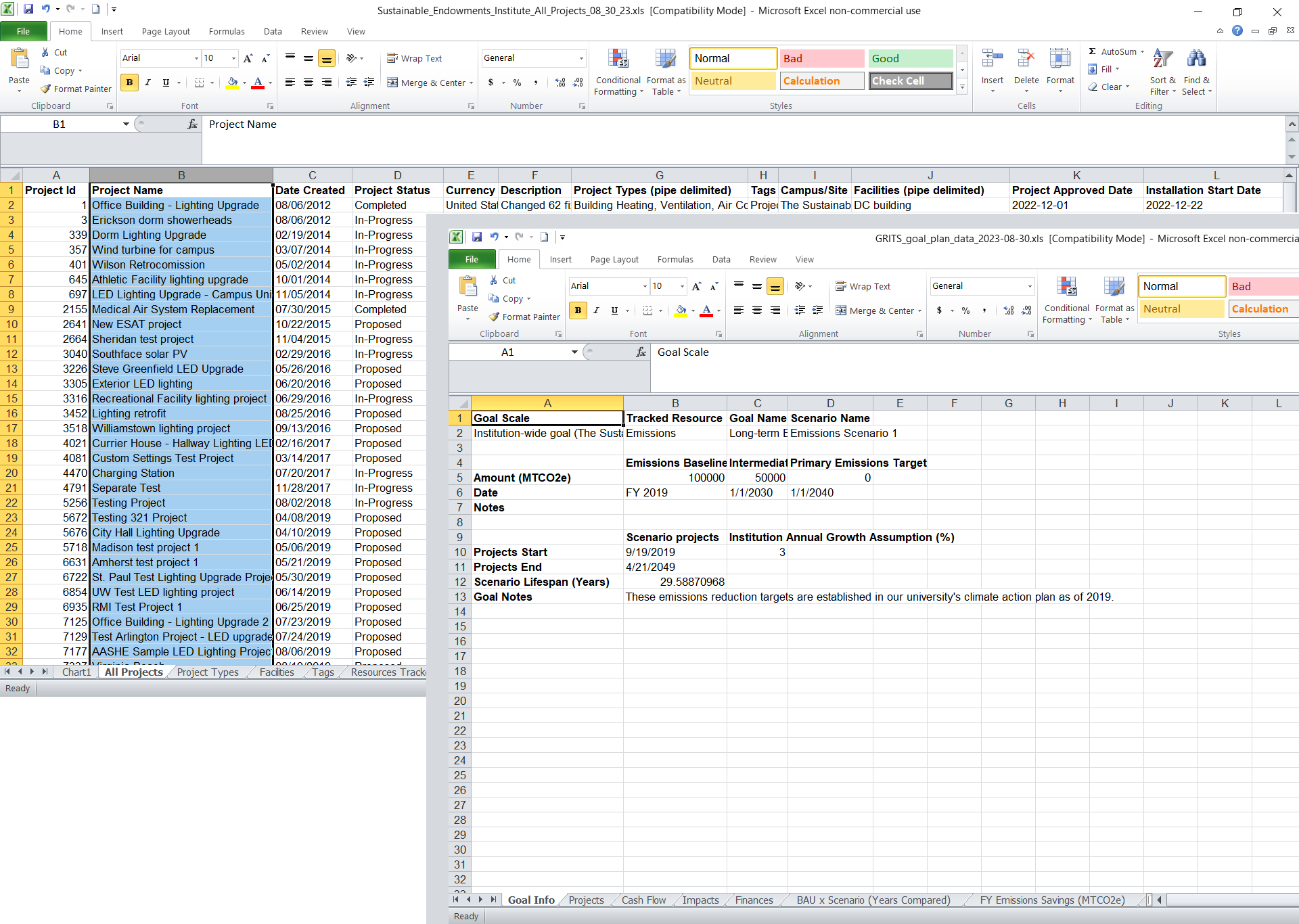GRITS offers numerous features for sharing your project-level, portfolio-wide, and sustainability action plan data. With so many ways the platform can help you communicate the impacts of your work, we thought it could be helpful to put together a list!
Project-level sharing features
1) Project-level PDFs: Export all of the details associated with each project into an easy-to-read PDF format in one click. Build a report from these PDFs to share with others.
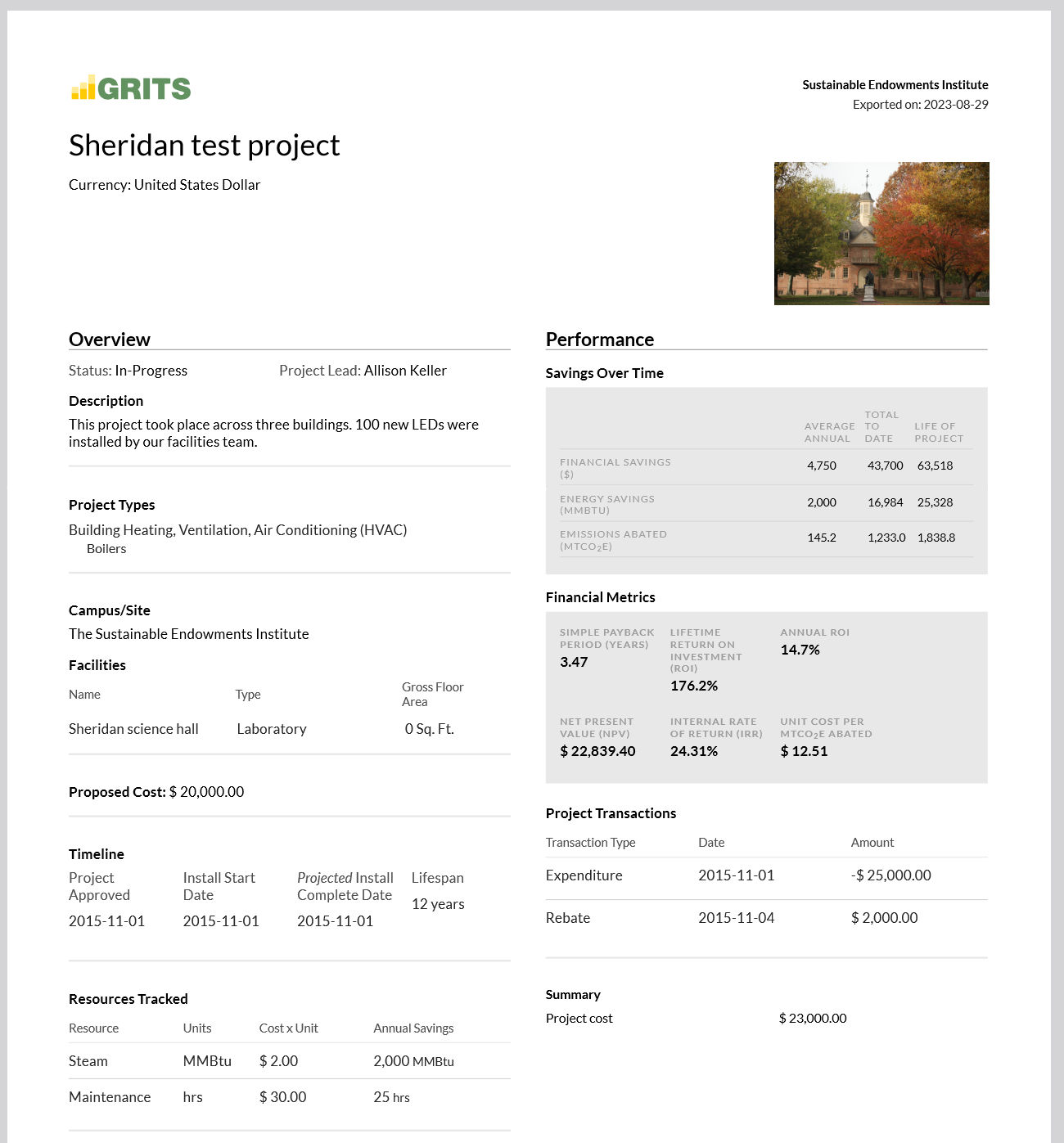
2) Project Profiles: The Profile is a widget that displays your project’s name, description (up to around 120 characters), lifetime energy/carbon/water/waste/financial savings and return on investment, any publicly visible cover photo that you’ve chosen, and your institution’s logo (if available). It’s a great option for publicly highlighting your project’s impact in a more compact format than the project-level webpage. You can either embed this widget in a website (it will update automatically whenever your project data changes) or download these images as PNG files for social media posts.
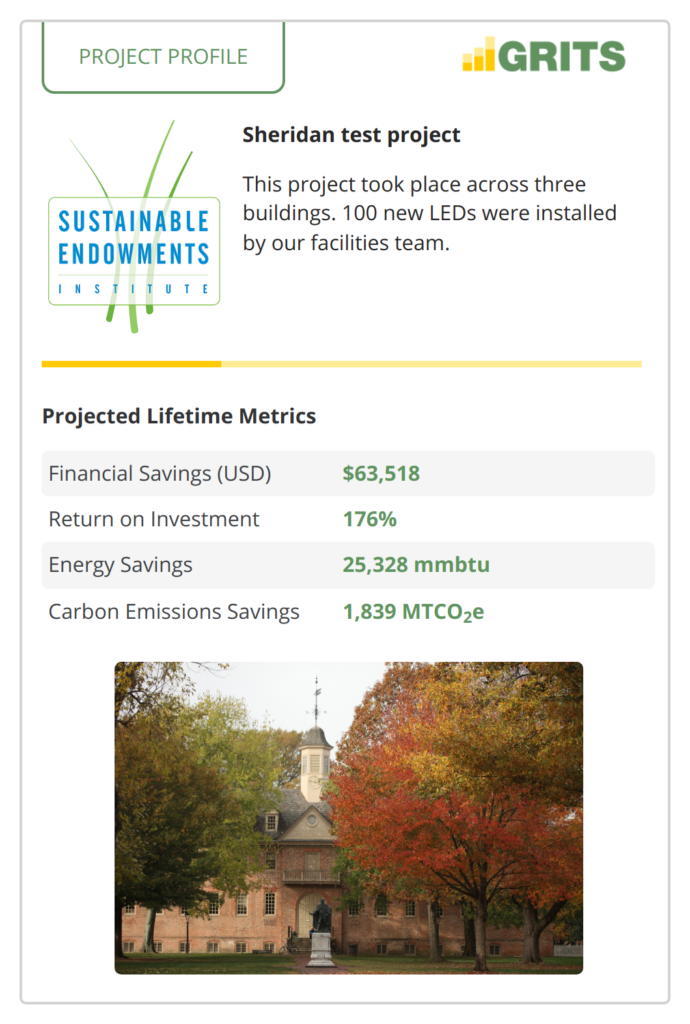
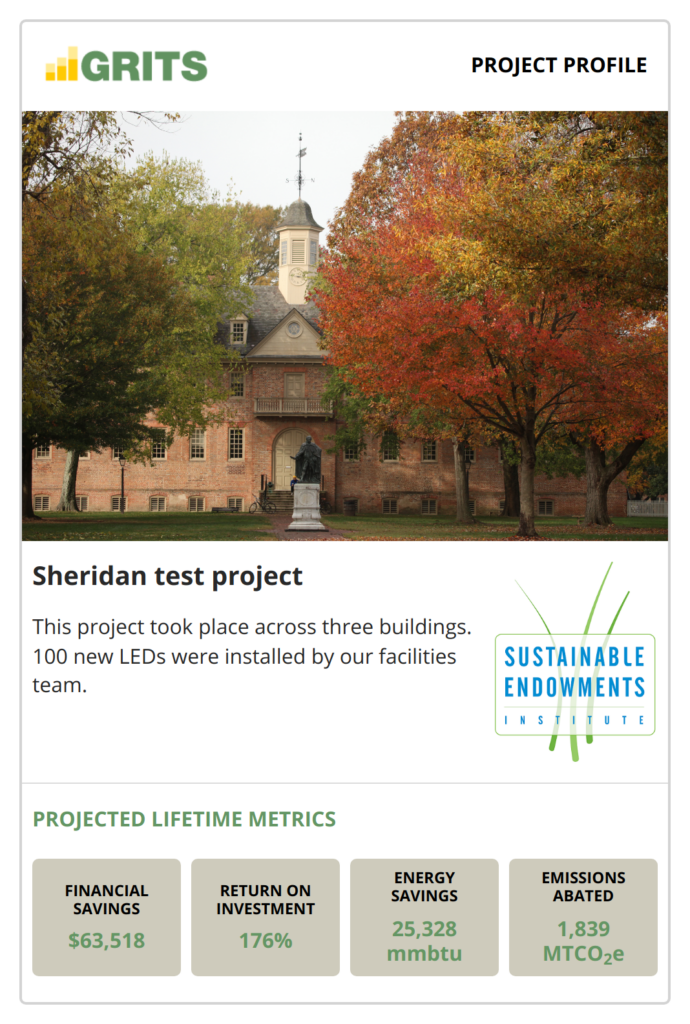
3) Project-level read-only webpages: Looking just like the project-level PDF, this option allows you to share a link to a read-only webpage that displays all of your project’s details. This webpage will update automatically whenever your project data changes and can be viewed by anyone, even if they don’t have access to GRITS. You can easily revoke access later by disabling the link.
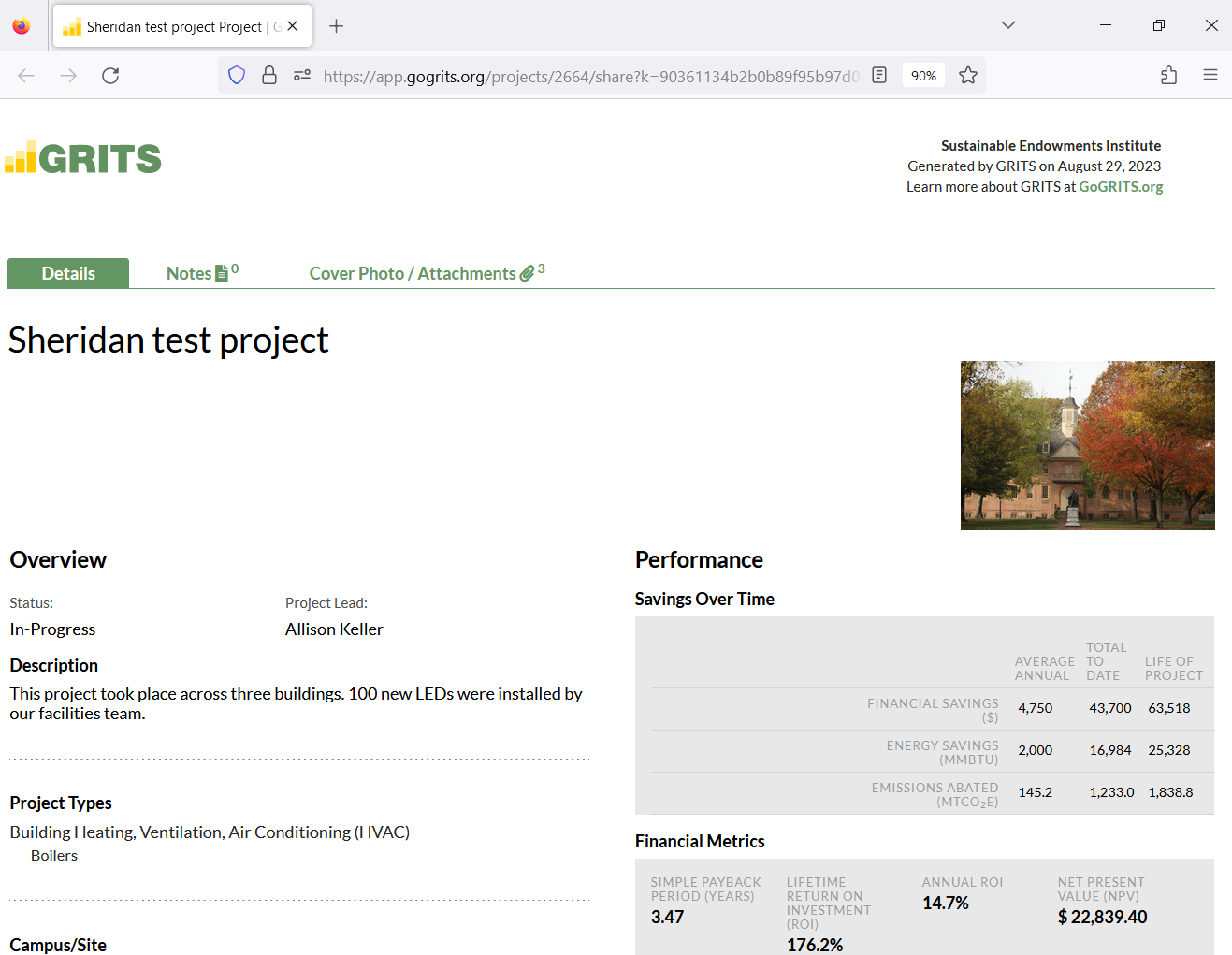
Portfolio-wide data sharing features
4) Customizable Public Dashboard: Choose between four and eight metrics that aggregate data across your project portfolio and select your preferred layout, and GRITS will generate a Public Dashboard that you can embed into a website to highlight the impacts of your projects. This dashboard will update automatically whenever your project data changes.
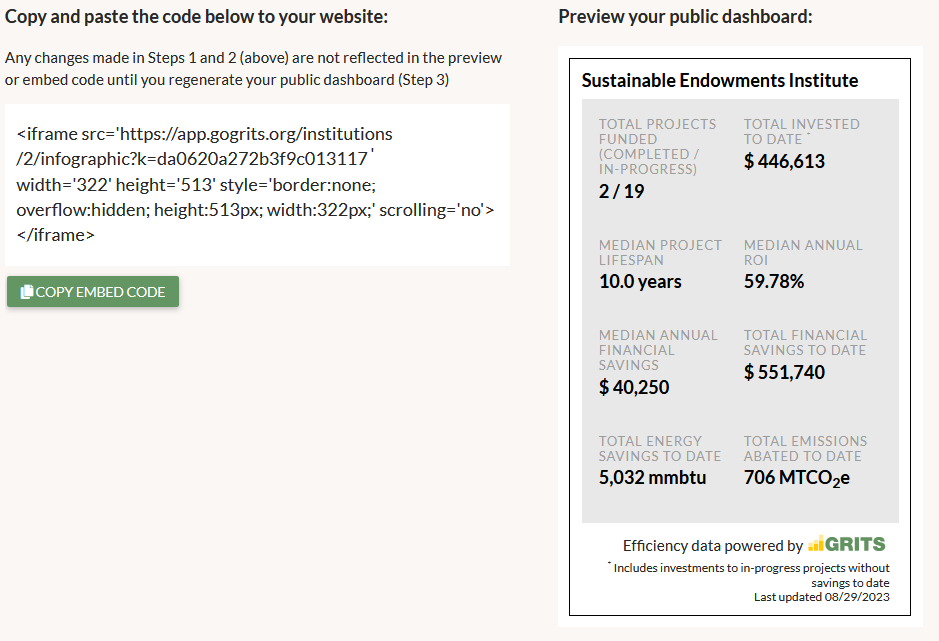
5) Reports tab charts: Quickly generate charts that illustrate the carbon, energy, financial, waste, and water savings achieved by your projects. All charts can be downloaded as PNG files or exported to PDF for inclusion in reports or websites.
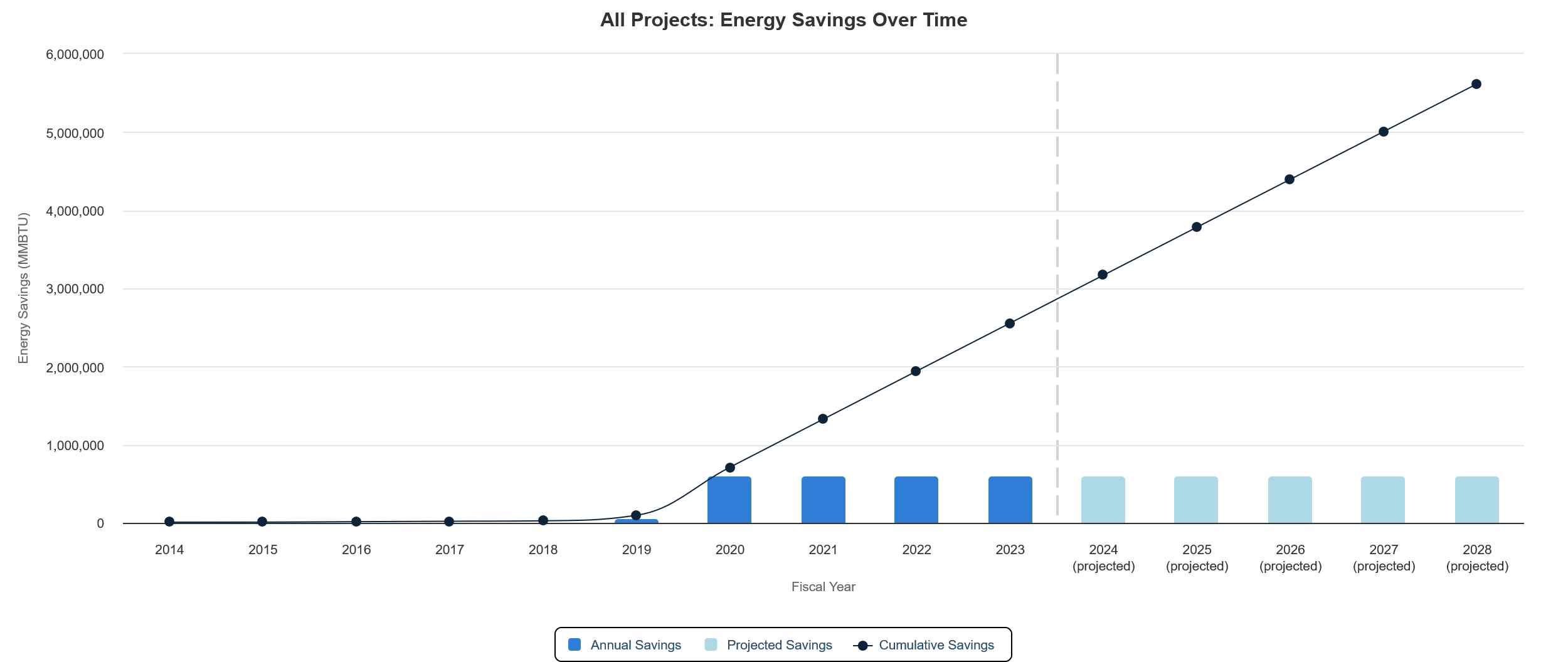
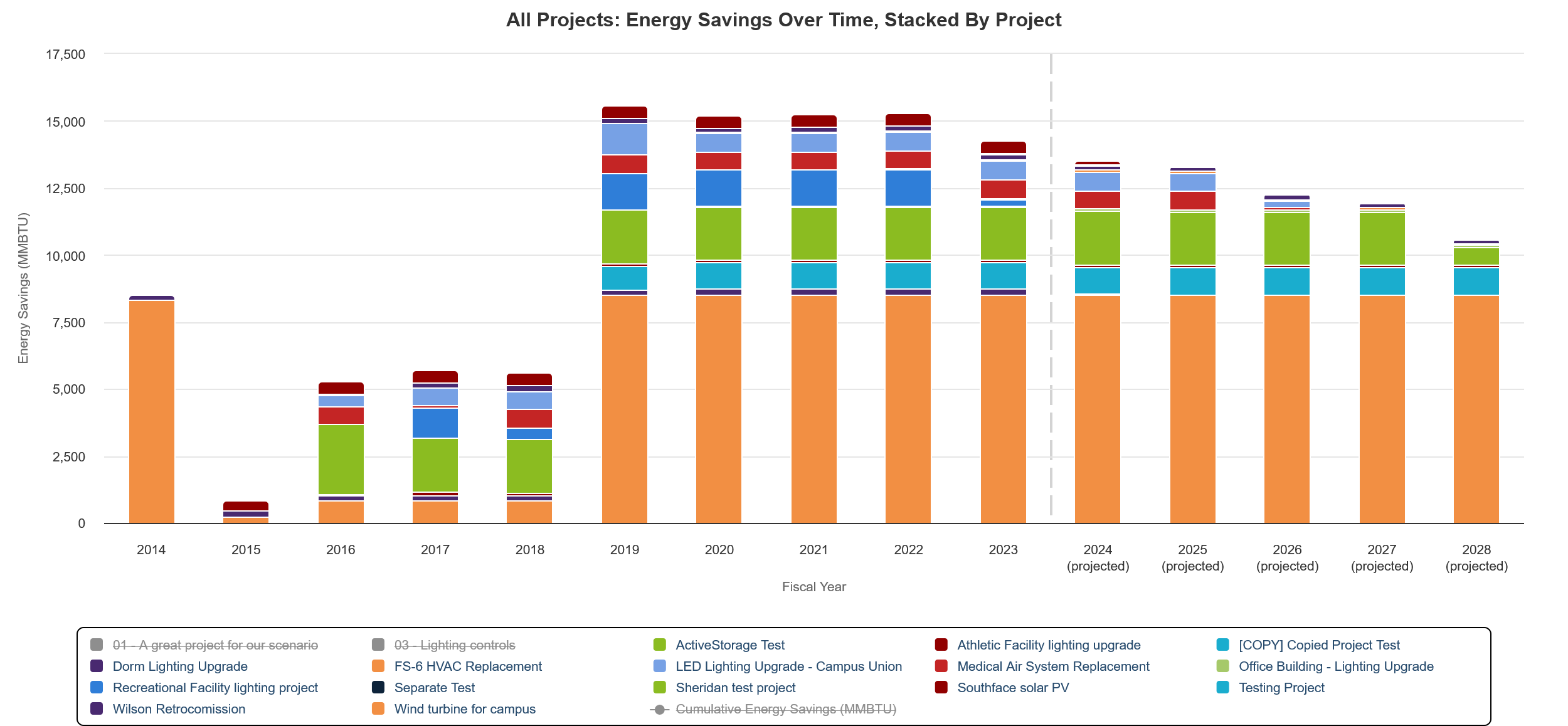
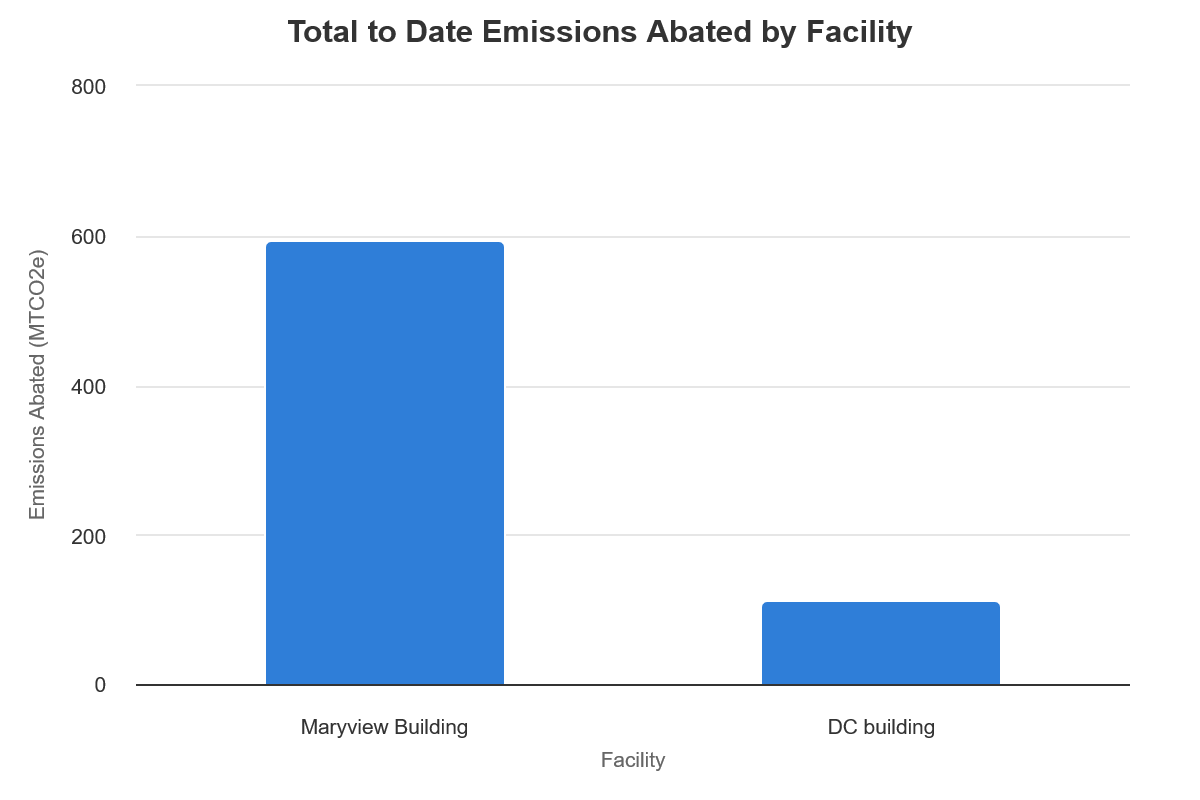
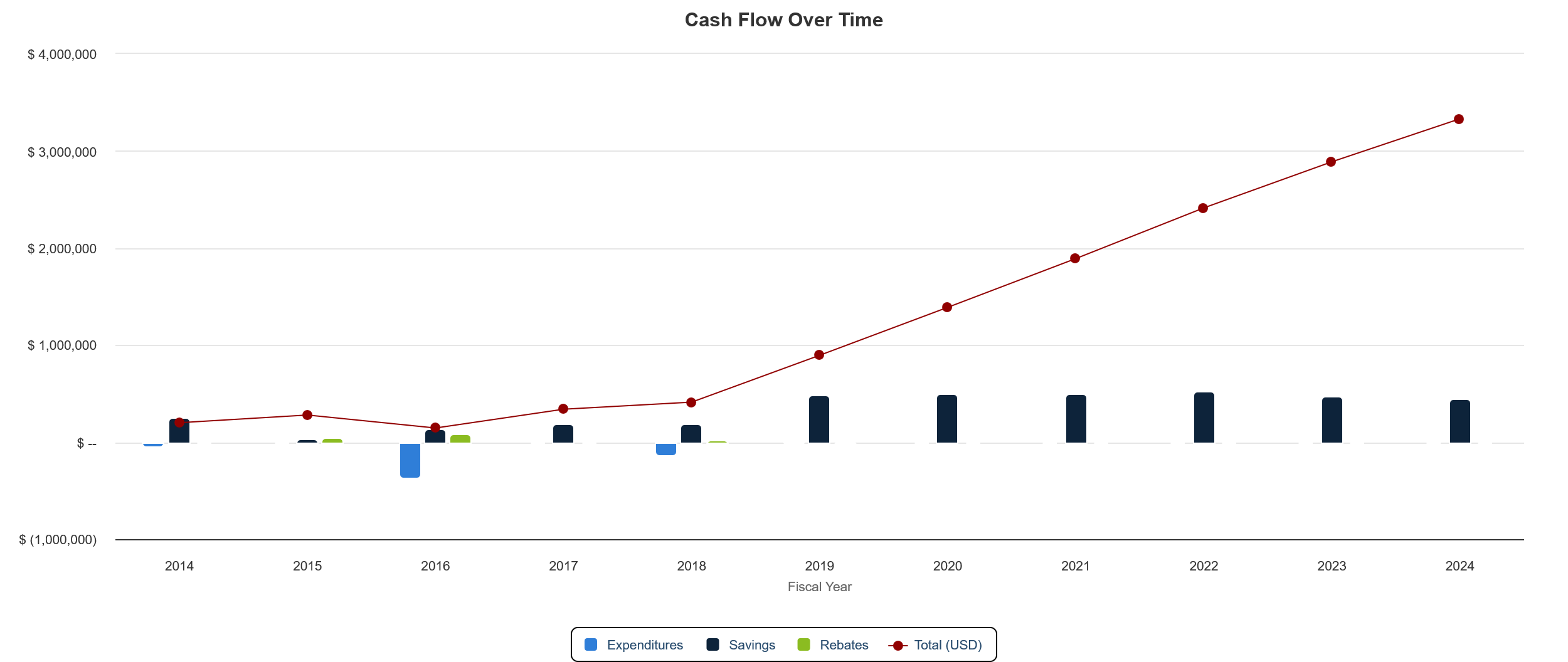
Sustainability action plan sharing features
6) Scenario chart: You can use GRITS to design pathways for achieving your institution’s climate action plan or complying with state or local targets for building efficiency. Quickly generate a chart that illustrates the anticipated carbon, energy, waste, and water reductions achieved by your sustainability action plan model (“scenario”). Download a PNG file for inclusion in reports or social media sharing.
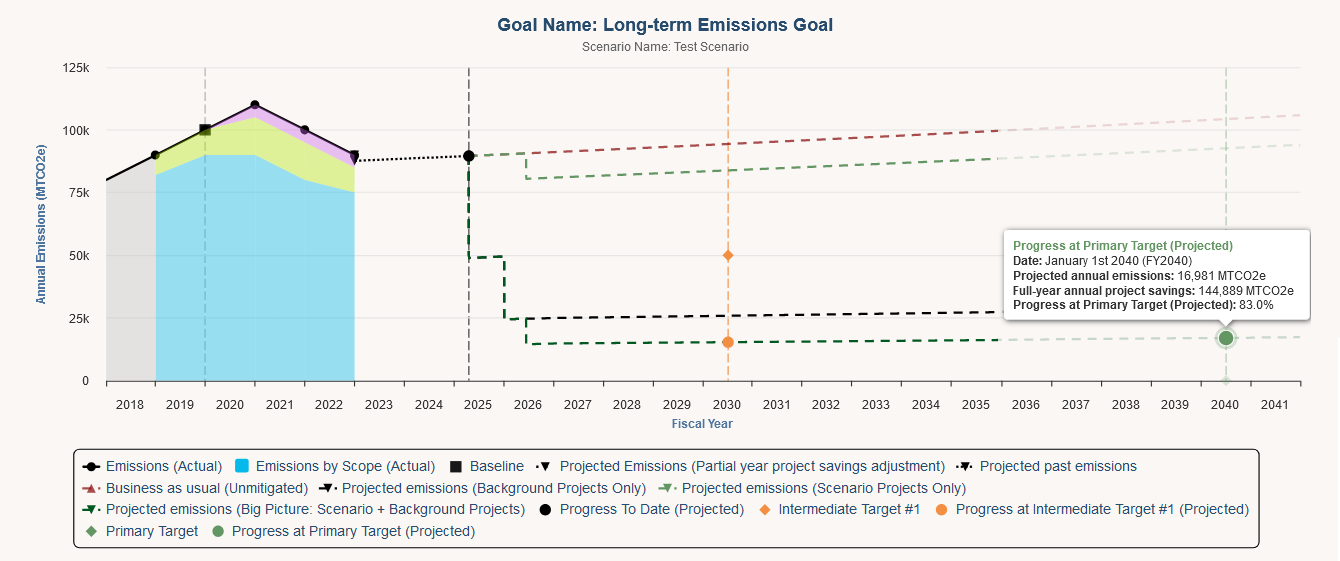
7) Scenario-level read-only webpages: This option allows you to share a link to a read-only webpage that displays all of the details of your scenario. This webpage will update automatically whenever your scenario data changes and can be viewed by anyone, even if they don’t have access to GRITS. You can easily revoke access later by disabling the link.

8) Customizable and interactive Scenario Dashboards: Choose which sections of your scenario page that you’d like to display (even down to the specific metrics from each section), and GRITS will generate a dashboard that you can embed into a website to highlight the impacts of your scenario. This dashboard will update automatically whenever your scenario data changes.
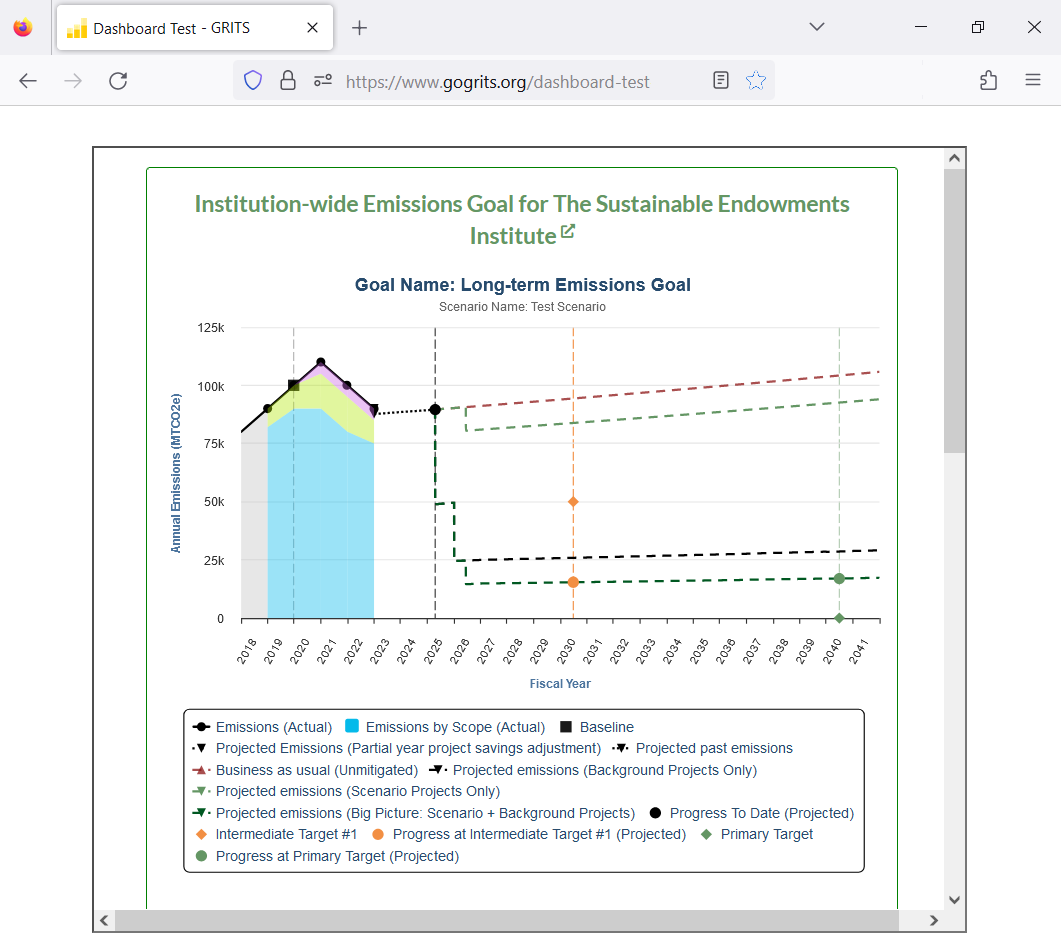
9) In addition to the various sharing options above, you can also download spreadsheets containing all of your project and goal scenario data. This allows you to go even further beyond the calculations performed by GRITS and work with your data any way you like.
